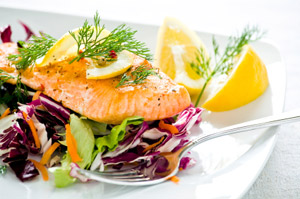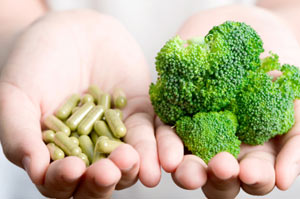Going through a breakup or any emotional trauma can be pretty tough. Having to deal with all of the emotions can leave you lost and confused. However, not dealing with all of the confusion, anger and sadness you may be feeling can lead to even bigger problems down the road, such as overeating or depression.
Seek comfort from friends and family
When you’re dealing with the emotional loss of a breakup, sometimes it’s hard to seek the help that you need. Maybe you feel embarrassed that things didn’t work out the way you thought they would, or maybe you don’t want to be a burden to the people you care about.
The truth is, if your friends and family knew how much you’re hurting, they’d want nothing more than to help you through this rough patch. These are the people who have known you the longest, which means they’re the best-equipped to keep you from falling into the depths of despair and self-doubt. They’ll be there to quickly point out all of your great strengths and the positive things you have going on in your life.
Write it down
If you don’t feel comfortable sharing everything with your friends and family, get a journal and start writing. Don’t worry about what to write, just pick it up whenever you start to get angry or upset, and pour out all those emotions on paper. This is a much better approach than keeping things locked inside or turning to junk food to drown your sadness.
Work it out
After taking a little bit of time to let yourself feel sad and be comforted by your friends and family, it’s time to focus on your well-being. One of the best things you can do is start working out on a regular basis.
Plenty of studies have proven that getting the heart pumping raises mood-boosting chemicals in our brains. The best part is it doesn’t really matter whether you were a workout junky before the breakup or if you don’t even own a decent pair of running shoes, just head to the gym and get moving.
You’ll probably be surprised at how much better you feel after just the first workout, and you just might find yourself hooked. This is also good news if you accidently indulged in a little too much ice cream that first week or so, as you’ll be able to work off any damage in no time.
Treat yourself
Once you’re feeling a bit more like yourself, or even better since you’ve been hitting the gym, reward yourself for making it through such a tough time. Maybe treat yourself to a new bag for the gym or splurge on finally getting those running shoes.
For more articles go to http://lifesportfitness.lifestyleezine.com





 While society overwhelmingly associates success and beauty with being slim and physically fit, an alarming percentage of the population in the developed world is actually overweight or even obese.
While society overwhelmingly associates success and beauty with being slim and physically fit, an alarming percentage of the population in the developed world is actually overweight or even obese. As concern over the rise in health issues such as obesity, diabetes and cardiovascular disease continues to grow, the importance of getting regular exercise, including both aerobic and strength-training activities, is becoming more widely recognized. While this applies to adults of all ages, when it comes to senior citizens, strength-training may be especially beneficial.
As concern over the rise in health issues such as obesity, diabetes and cardiovascular disease continues to grow, the importance of getting regular exercise, including both aerobic and strength-training activities, is becoming more widely recognized. While this applies to adults of all ages, when it comes to senior citizens, strength-training may be especially beneficial. As MetCon continues to gain popularity in the fitness industry, there are more and more highly advertised programs popping up on infomercials and in fitness magazines. However, the term itself actually refers to a type of workout designed to maximize the benefits of strength training and cardio workouts and not to any specific branded program.
As MetCon continues to gain popularity in the fitness industry, there are more and more highly advertised programs popping up on infomercials and in fitness magazines. However, the term itself actually refers to a type of workout designed to maximize the benefits of strength training and cardio workouts and not to any specific branded program.
 Increased awareness of the importance of maintaining a healthy lifestyle is leading many people to increase their activity levels and reevaluate the foods they eat on a daily basis.
Increased awareness of the importance of maintaining a healthy lifestyle is leading many people to increase their activity levels and reevaluate the foods they eat on a daily basis. As the medical industry continues to make strides in the prevention and treatment of many diseases and conditions, it’s somewhat surprising that diabetes is still on the rise in the U.S. One of the most concerning aspects is that some forms of diabetes may actually be preventable and can often be attributed to the foods we eat.
As the medical industry continues to make strides in the prevention and treatment of many diseases and conditions, it’s somewhat surprising that diabetes is still on the rise in the U.S. One of the most concerning aspects is that some forms of diabetes may actually be preventable and can often be attributed to the foods we eat.